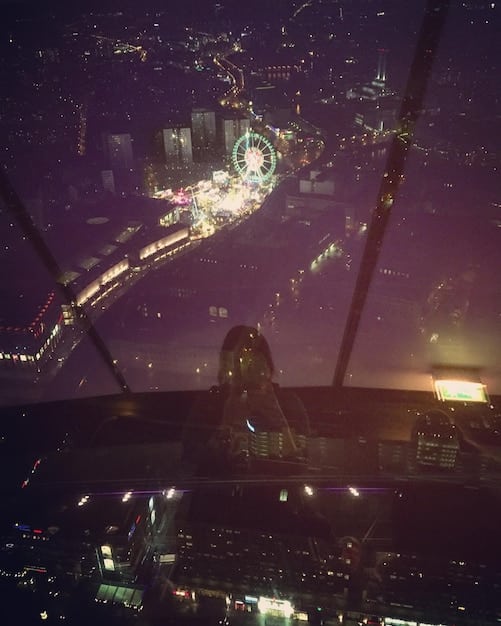The Future of Short Films: Trends & Tech in the US Film Industry 2025

The Future of Short Films: Emerging Trends and Technologies Shaping the US Film Industry in 2025 showcases incredible potential, driven by accessible technology, innovative storytelling, and evolving distribution methods, presenting new opportunities for both filmmakers and audiences.
The landscape of short films is undergoing a rapid transformation. Let’s dive in to discover how the future of short films: emerging trends and technologies shaping the US film industry in 2025 will impact how these cinematic stories are made, distributed, and experienced in the US.
The Rise of Accessible Filmmaking Tools
The democratization of filmmaking is well underway. Affordable and powerful tools are empowering creators to bring their visions to life like never before.
From smartphone cameras to user-friendly editing software, the barriers to entry are significantly lower, leading to a surge in independent short film production.

Smartphone Filmmaking: A New Era
Smartphones have revolutionized filmmaking. Creators are now able to leverage advanced camera technology and editing capabilities on their phones.
This ease of access can potentially level the playing field, allowing anyone with a vision to grab their phone and create a compelling short film.
Affordable Editing Software
Gone are the days where expensive editing suites were a necessity. Now affordable, or even free editing software is available. These options offer powerful features that rival those of professional tools.
Creators can now edit, color grade, and add special effects to their films without breaking the bank.
- Mobile filmmaking kits including stabilisers, lenses and microphones.
- AI powered editing software to streamline workflow.
- Cloud-based collaboration platforms for remote teams.
The accessibility of filmmaking tools is fostering innovation and creativity in the short film space. This shift empowers a wider range of storytellers and diversifies the cinematic landscape.
Virtual Production and Real-Time Rendering
Virtual production is changing the game for filmmakers. By combining real-time rendering, motion capture, and LED screens, virtual production environments enable creators to visualise and modify sets in real time.
This allows for greater creative control. It can also reduce the need for costly and time-consuming location shoots.
Virtual Sets: Limitless Possibilities
Virtual sets are revolutionizing the way scenes get filmed, opening boundless options. Filmmakers can construct intricate environments that were previously unattainable.
The use of real-time rendering can blur the lines between reality and imagination, expanding creative storytelling.
Lowering Location Costs
Traveling to exotic locations can be expensive and logistically challenging. With virtual production, filmmakers have the ability to create their desired locations from a studio.
The significant reduction of the need for expensive and cumbersome location shoots means filmmakers can instead focus on the creative aspect of their short films.

- Cost-effective pre-visualisation.
- Efficient collaboration between departments.
- Reduced on-set revisions.
Virtual production has enabled filmmakers to explore new creative avenues. They can now tell stories that were previously impossible to produce, opening new possibilities for the future of the short film medium.
Interactive Storytelling and Immersive Experiences
The way audiences engage with short films is evolving. As technology progresses, films become more than just passive viewing experiences.
Interactive storytelling and immersive technologies are creating films that respond to the viewer’s choices and actions, blurring the lines between film and gaming.
Branching Narratives: Choose Your Own Adventure
Branching narratives provide audiences the opportunity to impact the story. The viewers make decisions that change the direction, and alter the impact of the film.
This collaborative approach can lead to deeper investment and a more memorable movie encounter.
VR and AR Integration: Stepping into the Story
Virtual and augmented reality technologies offer a transformative watching adventure, placing audiences right into the middle of the story.
Viewers can explore virtual environments and connect with characters like never before, producing a far more instinctive and meaningful narrative.
- Extended reality storytelling experiences.
- Personalised viewing via user data analysis.
- Gamification of short-form content.
These methods introduce viewers of films into active individuals, offering unique and unforgettable experiences, in addition to the continued progress of storytelling advancements.
The Influence of Streaming Platforms and Online Distribution
It wasn’t long ago that short films were merely warm-up acts before main attractions, or a way for filmmakers to get noticed prior to producing larger films. Now, film streaming sites are promoting short films and putting them in the spotlight.
Streaming services have created enormous worldwide accessibility to short films from any generation, from any genre. Digital delivery has enabled filmmakers to broaden their fan base and link up to new audiences.
Short Film Categories on Streaming Platforms
Streaming platforms are now realizing the value of small movies, with many producing sections completely specialized in short films.
This provides creators many more opportunities to showcase their work, and creates a dedicated viewership particularly searching for smaller, unique stories.
Social Media as a Launchpad
Social media is playing a key part in the achievement of small films. Filmmakers now can employ platforms like TikTok, Instagram and YouTube to market their films and access a vast audience.
Social networking provides filmmakers with an unparalleled chance to build an audience, collaborate with fans, and create buzz surrounding their works.
- Data-driven content recommendations.
- Direct filmmaker-to-audience engagement.
- Global reach and distribution.
With the impact of streaming services and social networking, short movies are finally recognized for their own unique quality. This has introduced a change in how creative people interact and distribute their works to audiences globally.
AI-Assisted Filmmaking
Artificial intelligence is rapidly becoming a valuable tool for filmmakers, offering new ways to streamline the production process and enhance creative possibilities.
From scriptwriting to visual effects, AI-powered tools are helping filmmakers save time, reduce costs, and explore innovative storytelling techniques.
AI-Powered Scriptwriting Tools
AI technology can help filmmakers jump-start the scriptwriting process. It’s useful for creating screenplays, or outlining tales.
AI generates multiple possibilities. Furthermore, it assists authors in refining their scripts, enhancing story aspects, and guaranteeing narrative coherence.
AI for Visual Effects and Animation
Artificial intelligence is changing the way visual effects and animation are made. Filmmakers are able today to construct amazing images and animations at an unmatched speed using AI algorithms.
AI accelerates production processes, opens doors for artists to experiment, and offers previously unthinkable creative opportunities.
- Automated task management and scheduling.
- AI-driven character design and animation.
- Personalized film recommendations for audiences.
AI is revolutionizing the way filmmakers produce their works by streamlining processes and unleashing new creative opportunities. AI is now assisting in both time and money management, giving filmmakers more opportunity to concentrate on the imaginative elements of their projects.
The Rise of Micro-Budget Filmmaking
With the increasing accessibility of technology and the rise of online distribution platforms, micro-budget filmmaking is becoming an increasingly viable option for emerging filmmakers.
These films are crafted with limited sources. With many depending on imagination instead of money, frequently pushing creative boundaries and presenting novel narratives.
Crowdfunding and Independent Funding
Crowdfunding platforms are now a vital tool for filmmakers looking for start-up funds. The systems let artists connect directly with prospective supporters.
Crowdfunding platforms allows filmmakers to collect money for a range of jobs, including idea creation to post-production. They provide a community for filmmakers to connect and build enthusiasm for their projects.
Guerrilla Filmmaking Techniques
Guerrilla filmmaking strategies are innovative and affordable approaches to filmmaking that allow directors to produce movies even under stringent limits.
These strategies enable filmmakers to enhance their resourcefulness, beat obstacles, and fully realize their ambitions, no matter what resources are accessible.
- Partnerships through social media to generate revenue.
- DIY prop development and production layout.
- Employing virtual assistants for management.
The combination of micro-budget film production tactics and online distribution platforms are democratising the film business. They are giving various filmmakers the opportunity to share their narratives with audiences all over the world.
| Key Point | Brief Description |
|---|---|
| 📱 Accessible Filmmaking | Smartphone and editing software make filmmaking available to everyone. |
| 🎬 Virtual Production | Reduce location costs, create immersive locations, and enable real-time modifications. |
| 🌐 Online Distribution | Streaming platforms and social media increase audiences and offer new possibilities. |
| 🤖 AI-Assisted Filmmaking | AI tools facilitate scriptwriting, special effects, and animation. |
FAQ
▼
The accessibility of economical filmmaking tools is a significant factor. Smartphones, user-friendly software, and online distribution networks have simplified the process. As a result more innovative storytellers can realize their movie making dreams.
▼
Streaming services are creating specialized short film genres. This provides creators more opportunities to share their work with a specific market. Also, it helps viewers find short form film content.
▼
AI is a powerful resource that supports artists in expediting their output. AI is used to create scripts, develop visual effects, and produce animated images. These resources offer filmmakers more possibilities to test out the creative process.
▼
Start with crowdfunding sites to boost money. Then, use guerrilla filmmaking methods, and do it yourself resources to produce sets, props and marketing. You are limited only by your imagination.
▼
Virtual truth mixes immersive adventures with film. Through VR technologies, audiences grow to be energetic. This provides interesting memories and meaningful movie narratives.
Conclusion
The future of the short film industry is looking bright with technological advances, creative storytelling, and more viewers than ever. As we progress to 2025, expect to see more innovative short films breaking expectations and fascinating audiences across the US.





